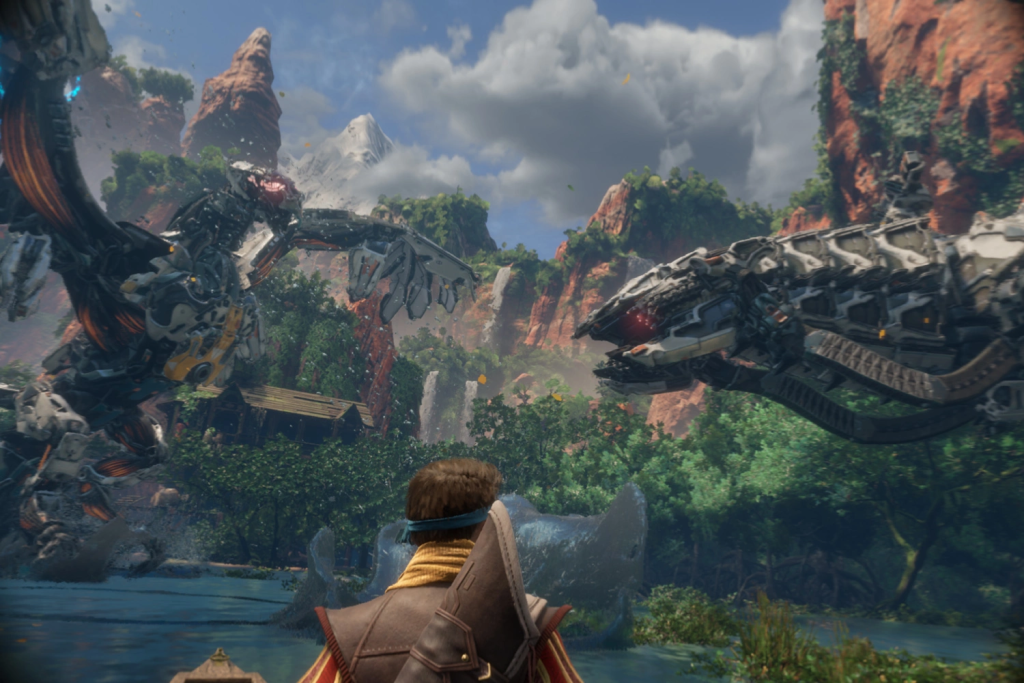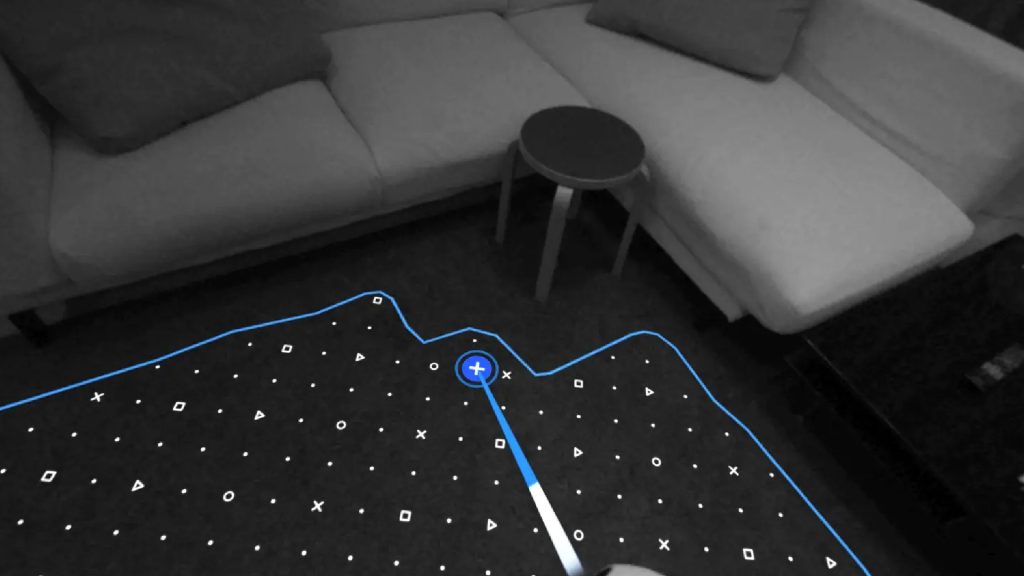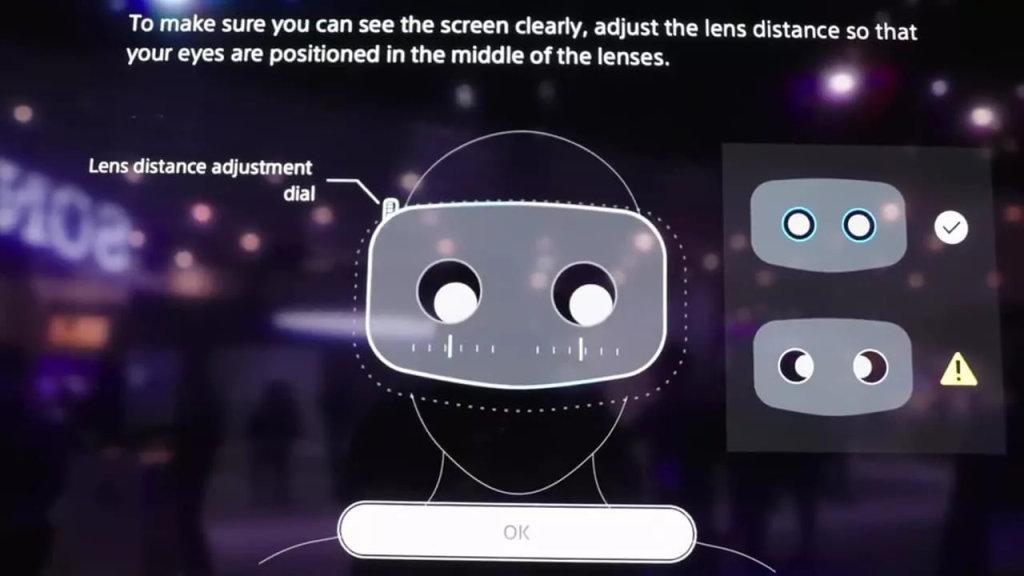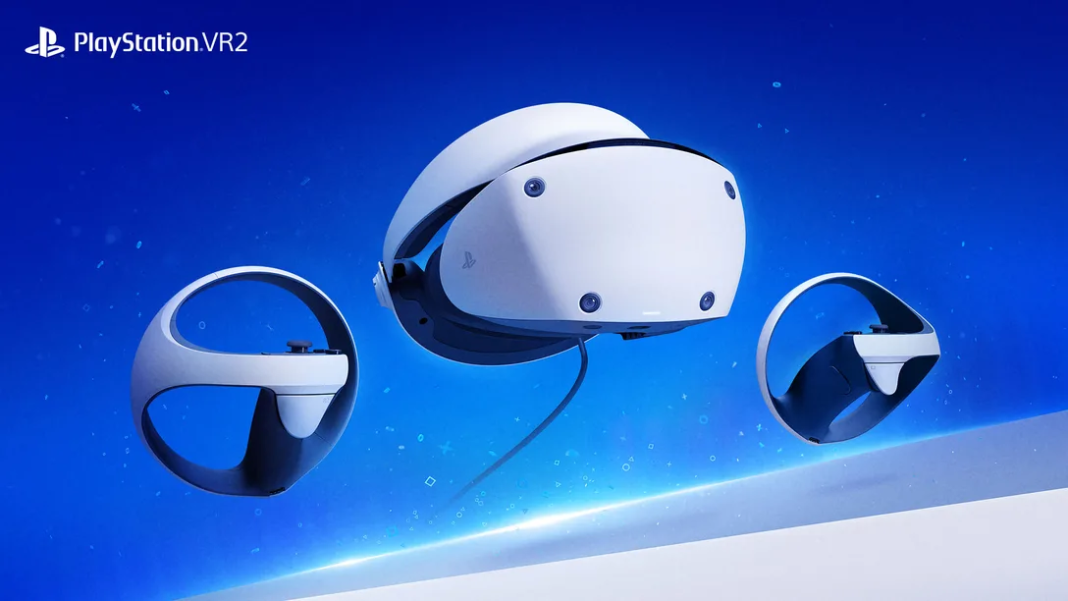Playstation’s latest Virtual Reality headset has been with us for a little over two months now, and Marty and I have been spending that time getting to grips with (and thoroughly enjoying) the experience of next-level immersion in the comfort of our own homes. Safe to say that we were both blown away by what it can do. This is one of the most powerful examples of VR tech I’ve ever used but is it worth the asking price for the average gamer or anyone who’s looking to dip their toe in the pool of “true cyberspace”?
What is VR?
To go back to the very basics, Virtual Reality (VR) is what the future of entertainment looked like in the 1980s. You don a headset, pick up your controllers and you’re whisked away to a virtual world. The PSVR2 (a catchy name, I know) essentially places two tiny 2K resolution screens in front of your face (one for each eye) and uses that to create the fully rendered 3D world of whatever game you’re playing, right in front of you. A world which, thanks to your two controllers, you can interact with in basically the same way you would our own world. This, with the inclusion of incredibly clever haptics in the headset and controllers (think high-definition rumble features, and resistance in the finger triggers) creates the single best VR space on the market right now.
While a lot has been made of the so-called “Meta-verse” in the last couple of years it must be said that, as of now, the PSVR2 is a strictly gaming-oriented device. You won’t be logging on to any virtual meetings with Mark Zuckerberg’s legless nightmares any time soon. There isn’t even a dedicated 3D video player. So, while this might not be the most versatile piece of kit on the market, it absolutely out-games the competition by a significant margin.
How does it look?
They say that seeing is believing and there’s no better place to apply that age-old adage than here. When I first popped my headset on, I was ready to be impressed but I was totally bowled over. The first game I started up was the bundle game (well, bundled at a higher price) Horizon: Call of the Mountain, wherein you inhabit the post-apocalyptic, robot-dinosaur infested ruins of Earth. The game starts you out on a boat floating downriver to show off all the vibrant world has to offer. I’m almost embarrassed to admit that I kind of forgot that none of it was real and found myself reaching into the water and trying to reach overhanging branches to feel them. I was totally awestruck.

I then dove into Resident Evil 8’s VR mode and I almost instantly quit because it was too horrifying. I’m quite a scaredy cat when it comes to horror games, but this was on another level. A crow squawking in a tree, something that wouldn’t phase me in a movie, or a traditional game completely scared the pants off me. I audibly yelped. Like, out loud. In my living room.
After that, I tried the alien wildernesses of No Man’s Sky (shout out to the Irish creators) and was, again blown away by the possibilities this tech offered. To be able to explore completely alien planets with fantastical creatures and vegetation all around as if it was just a normal Friday was truly magnificent. Our own planet is a little more boring to me now for having experienced it!
The pixel density (remember you’re essentially looking at a 4K image on screens no bigger than a poker chip) means that there’s basically no blurriness or jagged edges to objects and character models. You can really see where all the money went in terms of the visual tech.
PlayStation were able to achieve this insane level of realism thanks to cutting some very clever corners. The headset used iris tracking technology to know exactly where you’re looking at all times.

This allows it to not only know to render the things you’re focussed on in realistic detail, but to also only semi-render things in your peripheral vision. It also uses something called “foveated rendering” to basically not render anything in your blind spot at all (we all have one, try this out to see how it works). This also allows for what PlayStation call “gaze tracking” meaning that you can navigate menus with just your eyes. No controllers or head-turning necessary. It’s quite spooky the first few times you try it, however, there comes a point when it feels totally natural.
How does it feel?
As I mentioned above, the headset and the controllers make ingenious use of vibrations and haptic feedback to give a real sense that everything around you is real. When you first pick up the controllers (one for each hand) you’ll notice that every piece of intelligent design from the normal Dualsense controller is present. The rumble features can be as minute so as to mimic brushing your hand through grass, or as intense as pulling yourself up a cliff-face hand over hand. Similarly, the triggers can have a huge amount of weight behind them. When you’re pulling back your bowstring in Horizon you feel some serious pressure on your fingers.

What surprised me the most, though, was the haptic feedback in the headset itself. It seems like something that many people wouldn’t consider but when you think about it a bit more it makes total sense. Some things you would absolutely feel with your whole body like the roar of a Thunderjaw in Horizon or the shuddering of your ship entering atmosphere in No Man’s Sky. As with the feedback from the controllers and the precise rendering on the screens, this really adds to the immersiveness of the experience and it’s something that the PSVR2 excels at when compared to other devices.
Is it easy to set up?
It couldn’t be easier in fact. It’s almost the definition of “plug and play”. Once you get it unboxed and connected to the PS5 you’re taken through a short but thorough tutorial on how to not only fit the device to your head properly but also how to make sure you don’t bump into anything when you’re playing.
The headset has a small infrared camera on the front so it can show you what you’re looking at in the real world. This enables it to set up a virtual play area that you’ll be based in. You’re essentially asked to look around in a full sphere so the floor, the roof, and any obstacles are identified. This maps out a safe perimeter on your floor that you can then edit to make larger or smaller. Once this is set up you’ll be shown a warning in-game if you or your hands are close to hitting anything.

The headset itself is as easy as pie to set up too. It will use the iris-tracking I mentioned to make sure that your eyes are dead-center in each of the lenses that can be adjusted using a special dial on the bottom. Then you can bring the unit closer or further from your face using the adjustable strap to make sure that you not only have a comfortable fit, but that the screens are also fully in focus.

So, once you have a good fit around your face and your play area all set up, you’re good to go! The only obstacle to jumping straight in is that the controllers only have about 15 minutes worth of charge in them out of the box so be wary of that one.
Will it make me sick?
A lot of people find that, depending on the game, they can suffer from some mild motion sickness when trying VR for the first time. However, this is totally normal and to be expected. There are a few ways to mitigate this though.
First and foremost, the choice of game is important. You don’t want to be diving right into something that you’ll be running all over the place and making yourself dizzy. If you can, I’d suggest something fairly close to a normal activity that you can play sitting down. Something like Gran Turismo 7 or Kayak VR would be perfect for this. Two activities that you’d normally be sitting down for anyway, driving and rowing, will cause minimal motion sickness regardless of your experience level.
Secondly, while it may be tempting to fully immerse yourself in the game with the earphones provided with the headset, you’re definitely best off relying on an external speaker set for your first few tries. Whether this is your TV speakers or a soundbar, something that’s anchored in one place will serve you well. Motion sickness is the result of your body not experiencing movement in the same way your brain is (think seasickness or car sickness) so having a frame of reference for your position at all times is an absolute must.
Finally, if you do find yourself feeling a little green around the gills, you should take off the headset and stop playing immediately. If you continue to play while feeling ill you’ll essentially condition yourself to feel sick every time you put the headset on and that’s the exact opposite of what we want.
Does it have Beat Saber?
Sadly, no. Well, at least it doesn’t have Beat Saber yet. The game that took the internet by storm is still in the works for PSVR2 with no release date announced. If you’ve never heard of it, think of Beat Saber as Guitar Hero in VR with a lightsaber in each hand instead of a guitar. This trailer probably explains it better! Rest assured that when it does launch, I’ll give you a thorough review!
Is it worth it?
While the PSVR2 is, in my mind, the best VR gaming headset on the market right now, I can’t say definitively if it’s worth it. If you’ve already got a PS5 and are considering it then I’d say it’s absolutely worth the €600 price tag. It’s not much more expensive than the Meta Quest 2 but it is capable of s much more from a technical perspective.
If you don’t have a PS5 that’s where things get a little trickier. I wouldn’t say that it’s worth the full whack €1150 price tag that would net you the console and the headset (which you would also have to supplement with a few quid for a couple of games). Though if you’re one of those people who simply must have the best experience then maybe you can justify that to yourself. As I said, this is the best gaming headset on the market right now.
If you’re just looking to dip your toe in the VR space and see what this whole Metaverse malarky is all about then stay away. This is just for gaming, pure and simple. There’s no VR chat, no virtual supermarkets or meetings, or anything like that.
So, is the PSVR2 worth it? I would say yes if you take it for what it is. But if you haven’t already decided that you’re interested then I’d say hold off for now and see what develops. I think this is the future of gaming tech and the market is wide open and ready for a shakeup. One final thing to note is that in Ireland right now, the PSVR2 is only available in GameStop. As Marty covered, GameStop are ceasing operations in Ireland soon so get it while you can!


